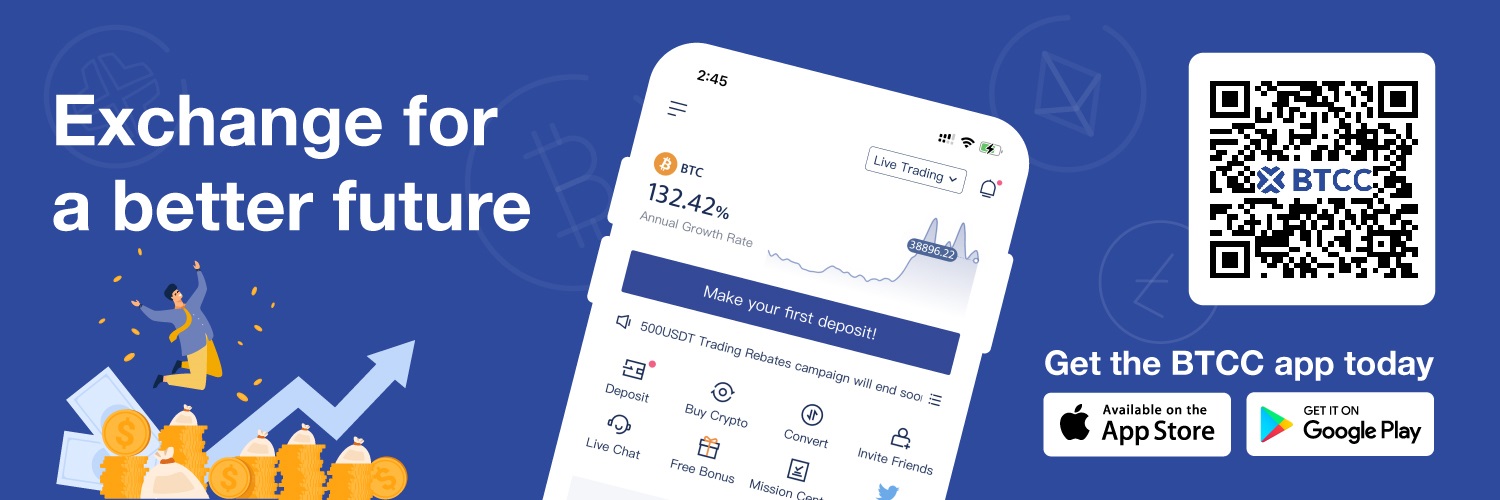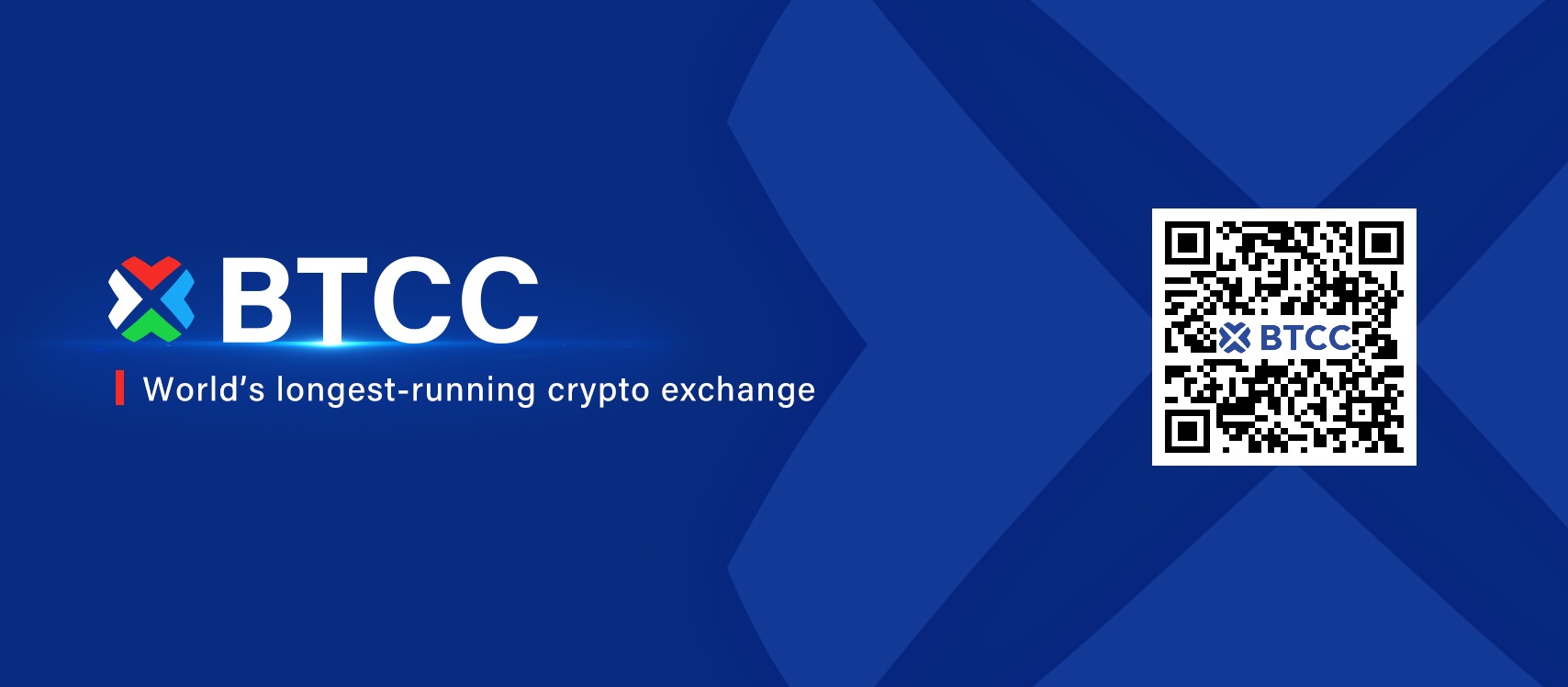Do you want to trade Futures on BTCC exchange? Here is the perfect guide for you.
What is a futures contract?
A futures contract, as the name suggests, is an agreement on a certain futures contract.
Once the agreement expires, the buyer (such as Erika) must buy at the agreed price, and the seller (such as Mike) must sell at the agreed price, that is, “futures delivery”.
In order to better match and meet the needs of users like Mike and Erika, futures trading platforms emerged.
The trading platform attracts more people in need to participate by formulating standardized futures contracts, and at the same time acts as a middleman to ensure that the futures contracts will be executed after they expire.
The “futures contract trading” or “contract trading” we often hear refers to the trading of futures contracts on trading platforms.
Delivery will be executed after the futures contract expires, but before delivery, multiple transactions can be carried out, instead of saying that if you buy it, you must hold it until the delivery time.

What is the role of futures contracts?
So, what is the role of futures contracts?
In the examples of Mike and Erika, the reason why futures trading occurs is that the two parties have different predictions about future market prices.
Mike thinks it will fall, so he sells it at the current price to lock in profits and hedge against the risk of the price falling at that time; Erika thinks it will rise, so he buys the bitcoin dug up by Mike in June at the current price.
You can lock in costs, and you can buy low and sell high. The functions of futures contracts are similar to those of futures trading, with the following two main functions:
1. Hedging future risks, which is what we often hear as “hedging” or “hedging”. For example, if the price of BTC rises, the futures will lose money, the number of BTC will decrease, and the total value will basically remain unchanged; if the price of BTC falls, the futures will make money, the number of BTC will increase, and the total value will remain unchanged .
In the futures market, a futures contract with the same variety and quantity as the spot one is bought and sold, but in the opposite direction. Use the profit of one market to make up for the loss of another market to avoid price risk. The price of futures is jointly restricted by the spot price and economic factors, and there is a delivery mechanism. In the long run, futures and spot prices are consistent.
In addition, with the contract, when the price rises or falls unilaterally, there will be an opposite force to push the price back to a relatively ideal state, control the spot market price, and make it return to the short-term irrational price reason.
2. The futures contract has the effect of leverage, which can make a small gain and amplify the profit. Of course, if the judgment is wrong, the loss will also be magnified.
Go to BTCC’s Exchange Platform
The way of contract transaction
Contract trading is divided into two ways, that is, open long (call) and open short (bearish).
The existence of futures has added a short-selling mechanism to the market.
For example, if the price of Bitcoin is 10,000 US dollars now, if you feel that the price is going to fall, you can choose the corresponding leverage multiple to short, and when the price drops to a certain price, you can sell the contract to make a profit.
The mode of opening long is the opposite of opening short.
When the leverage of contract trading is increased by 10 times, the benefits and risks obtained will also increase at the same time.
BTCC is the first contract stop for many novices in the currency circle.
Whether it is from the friendliness of the trading interface or the market analysis provided by a professional analyst team, it fundamentally assists novices to conduct contract transactions.
In addition, BTCC’s trading pairs are also much more abundant in the contract transactions at the same time.
BTCC currently supports 9 major currencies and 16 trading pairs to meet the trading needs of different users.
BTCC guarantees the diversification of currencies and provides users with richer product choices. A minimum of 0.5 USDT can be traded, and the maximum leverage of 150 times can be selected to improve the efficiency of capital use.
Margin Trading – Owning Your First Bitcoin
In contract trading, reasonable use of margin and leverage can achieve fixed losses and unlimited profits, but at the same time, novice users are requested to trade within the risk range that they can bear.
Please read the following carefully, BTCC will take you to own BTC at a low price.
Margin Trading, also known as “deposit” trading, means that the funds occupied by each transaction are only a certain percentage of the transaction amount of the transaction target.

What is margin trading?
The margin plays the role of leverage very well, and a relatively high investment rate of return can be achieved with a relatively small amount of investment.
Occupied Margin: Refers to the fact that when a user conducts contract transactions, due to the existence of leverage, the user does not need to pay the full amount of the order value, and only needs to freeze a part of the available margin as the occupied margin to hold the order.
When the user’s order is closed, expired, or liquidated, the occupied margin will be returned to the user’s account after deducting the liquidation fee.
Available margin: refers to the amount that can be used to freeze in the user’s account as the occupied margin.
For example:
John has 2000 USDT in his account, and the current margin requirement for BTC/USDT 100x is 100 USDT/lot.
If he uses 500 USDT to open 5 lots of BTC/USDT 100x, then John will freeze 500 USDT from the 2000 USDT as the margin for this order.
The remaining 1500 USDT is available margin.
In BTCC contract trading, the margin is a fixed margin, and the leverage is a floating leverage. The 100x and 50x that users see are all theoretical leverage multiples.
The actual leverage ratio = the contract value of the order/the margin occupied by the order (BTCC will adjust the margin of the trading pair from time to time according to the actual market changes, so that the actual leverage is close to the theoretical leverage, and at the same time prevent the user from being overly leveraged due to excessive market fluctuations and excessive leverage.
lead to excessive order risk).
Go to BTCC’s Exchange Platform
What is leverage?
Leverage is a common financial transaction system, borrowing assets through the margin system for investment, increasing the investor’s investment ability and amplifying the investment results while the tradable amount is enlarged; but it also enables investors to obtain benefits and bear risks Increase, regardless of whether the final result is a gain or a loss, it will increase at a fixed rate.
For example:
Taking the BTC/USDT 100x transaction as an example, under the condition of 100 times leverage, users can theoretically buy 100 USDT worth of BTC with a margin of 1 USDT. Whether it is bullish long or bearish short, the transaction capital is enlarged by 100 times.
What are floating profit and loss?
Floating profit and loss refers to book profit and loss and position profit and loss. It refers to the price difference between the position value calculated according to the current latest settlement price (the latest transaction price) and the opening value of the contract currently held by the trader.
BTCC users can see the floating profit and loss corresponding to each order in the App or in the web page transaction. The total floating profit and loss includes the floating profit and loss of all your current open position orders.
BTCC weekly contract floating profit and loss calculation formula:
Bullish open long buy, floating profit and loss = (latest price – opening price) lot size Bearish open short sell, floating profit and loss = (open position price – latest price) lot size
For example:
1. John buys 3 lots of BTC/USDT at a bullish price of 7000 USDT, and then BTC/USDT rises to 8000 USDT, then floating profit and loss = (8000USDT – 7000USDT) * 3 lots = 3000 USDT;
2. John sells 2 lots of BTC/USDT at a bearish price of 8,000 USDT, and then BTC/USDT drops to 6,000 USDT, then floating profit and loss = (8,000 USDT – 6,000 USDT) * 2 lots = 4,000 USDT.
About Market close
Market price liquidation refers to an order to close a certain number of contracts immediately at the best price in the market at that time.
BTCC provides top-notch liquidity, and the depth of the market can accept orders equivalent to 5,000 BTC in the first tranche. When a user places an order using a market order, BTCC can ensure that the user’s order is fully completed at the best price, and there will be no partial transaction.
Go to BTCC’s Exchange Platform
Take profit and stop loss to close the position
In BTCC, take profit and stop loss can automatically calculate the profit after closing the position for the user.
Take profit and stop loss liquidation is a kind of price limit liquidation. It locks considerable profits and accepts losses by customizing the input price, and waits for the closing order of a certain number of contracts according to the custom price. When the latest transaction price touches When the user defines the price, the order can be closed.
For example:
John is bullish on the BTC/USDT price of 10,000 USDT and buys to open a position. According to his own judgment, he analyzes that BTC/USDT may rise to 11,000 USDT or fall to 9,000 USDT. Define the price to take profit at 11,000 USDT and stop loss at 9,000 USDT. When BTC/USDT reaches 11,000 USDT or 9,000 USDT, a liquidation order will be automatically triggered.

Forced liquidation
In BTCC, if the user account fails to meet the minimum margin requirements, it will enter the forced liquidation process, and the forced liquidation will be carried out according to the principle of loss priority and time priority. If the margin requirement cannot be met after the forced liquidation, the forced liquidation will continue until the minimum margin requirement is met.
BTCC minimum margin ratio: 30%
Example:
John has 500 USDT in his account, and opened 1 lot of BTC/USDT contract with 100x leverage, using 110 USDT margin, and the available funds are 390 USDT; the minimum margin ratio is 30%, that is, 110 USDT*30%= 33 USDT.
When a loss occurs and the account balance is less than 33 USDT, forced liquidation (commonly known as “liquidation”) will be triggered.
If the net assets of the account are positive after the forced liquidation, the positive balance will still belong to the user; if the net assets are negative after the forced liquidation (commonly known as “liquidation”), BTCC will bear the negative balance of the user.
Please check BTCC official website or contact the customer support with regard to the latest information and more accurate details.
Please click "Introduction of BTCC", if you want to know the details and the company information of BTCC.





Comment by Hans
April 24, 2024
as I am trading here various assets, for me it's the most important feature. i mean, flexibility in tradable markets. i alternate trading styles, meaning that sometimes I trad...